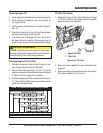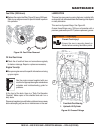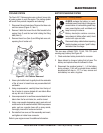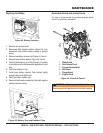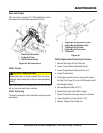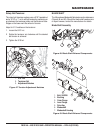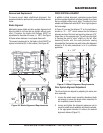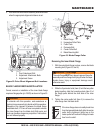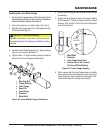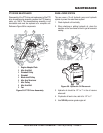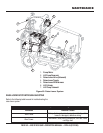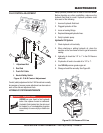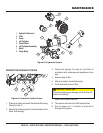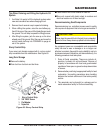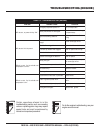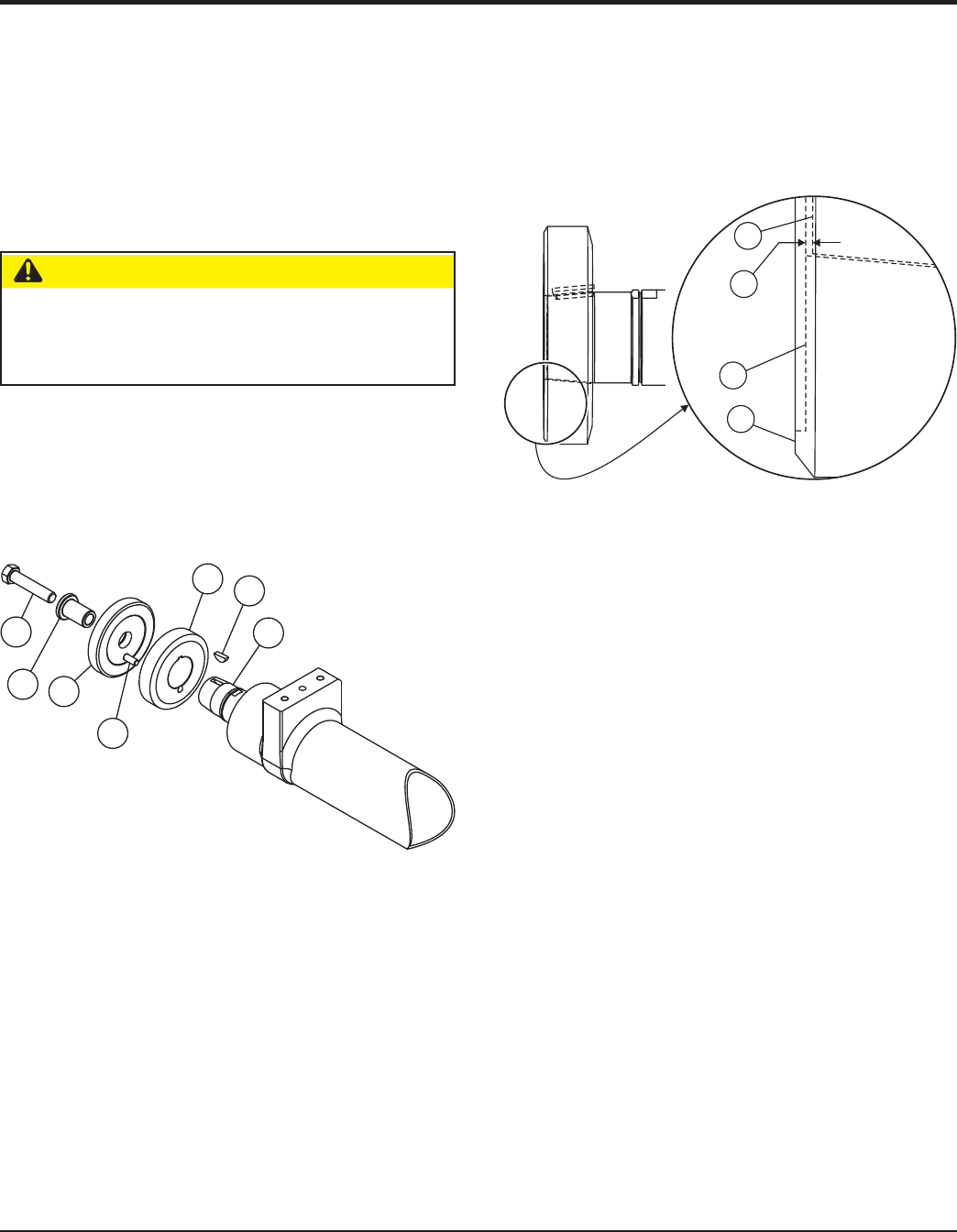
MQ SP4030 SAW • OPERATION MANUAL — REV. #0 (01/22/09) — PAGE 49
MAINTENANCE
Installing the Inner Blade Flange
1. Ensure that the tapered portion of the blade shaft and the
inner blade flange are clean and free of burrs or indentations.
Clean and repair as necessary. See Figure 54.
2. Ensure the drive key is in place (Figure 54, item 6).
3. Slide the inner flange (item 5) onto the tapered portion
of the blade shaft (item 7).
4. Install the outer blade flange (item 3), flange bushing
(item 2), and mounting bolt (item 1).
5. Tighten with a 1/2" impact wrench to seat the tapered
surfaces of the inner flange and blade shaft.
CAUTION — Do not use lubricant
DO NOT use lubricant of any kind. Lubricant prevents
the tapered surface of the flange and shaft from mating
properly.
1
2
3
5
6
7
4
1. Mounting Bolt
2. Flange Bushing
3. Outer Flange
4. Dowel Pin
5. Inner Flange
6. Drive Key
7. Blade Shaft
Figure 54. Inner Blade Flange Installation
1
3
2
4
0.000”
to 0.030”
1. Blade Shaft
2. Tolerance
3. Inner Flange Inside Face
4. Surface Area to be Checked
For Runout While Rotating
Figure 55. Inner Flange Seating
6. Loosen the mounting bolt and remove the outer flange
and bushing.
7. Inspect the inner flange to ensure the proper seating
of the tapered fit. The inner flange should be seated
between .030" and 0.0" (flush) to the end of the blade
shaft. See Figure 55.
8. Test to ensure that the inner flange does not wobble
when rotated. Use a dial indicator on the face of the
flange (Figure 55, Item 4). Maximum tolerance is .002"
runout on the face of the flange when rotated.



